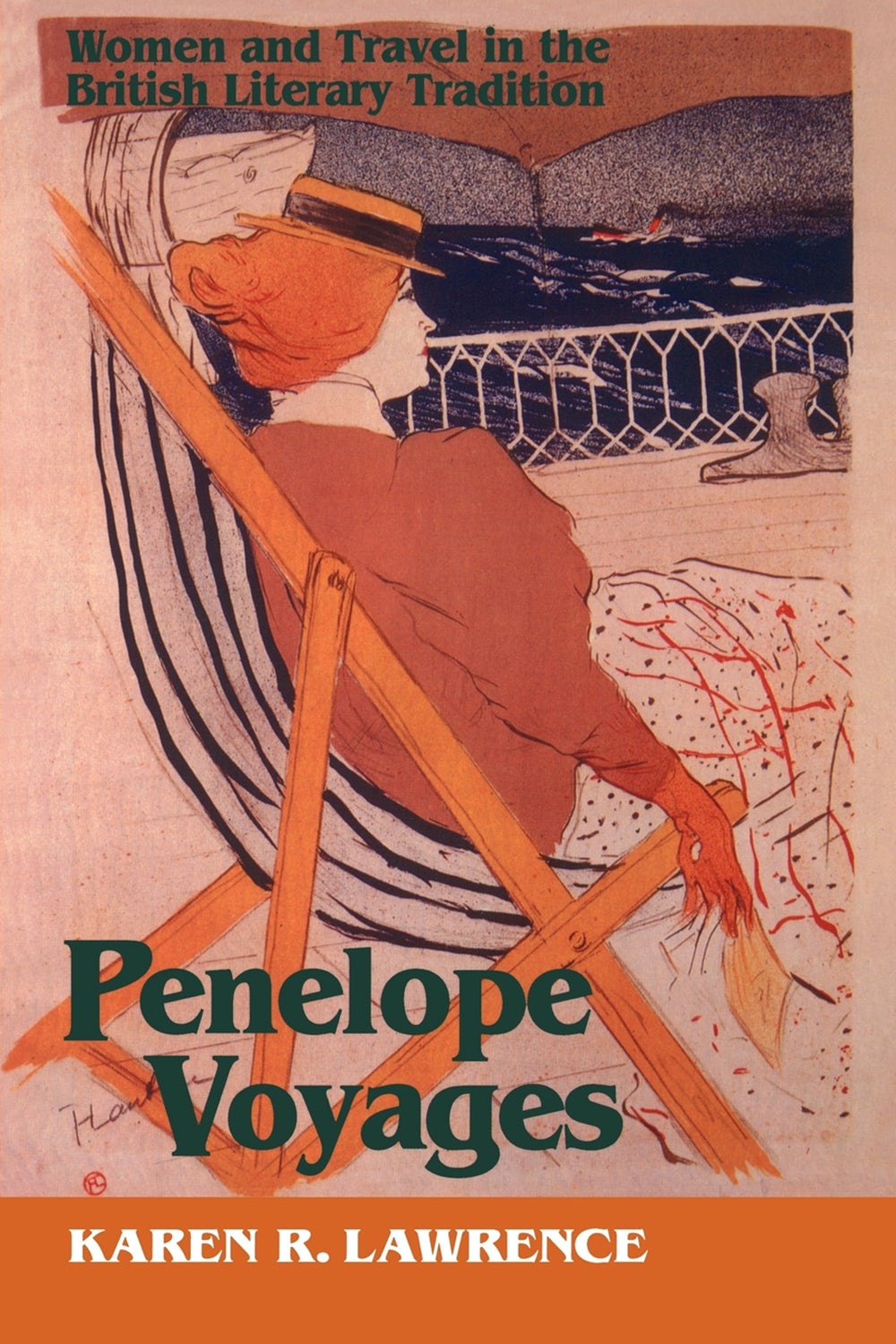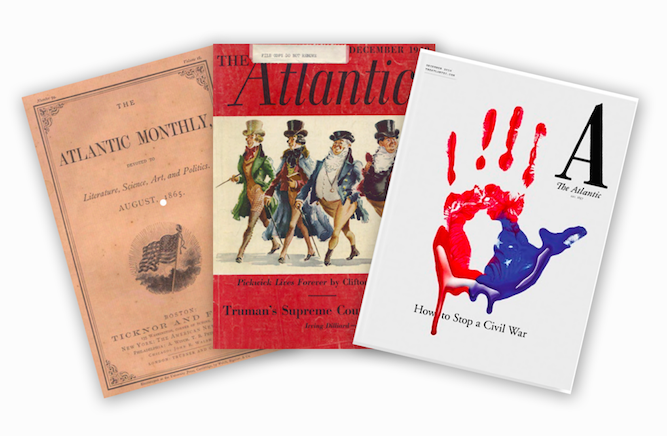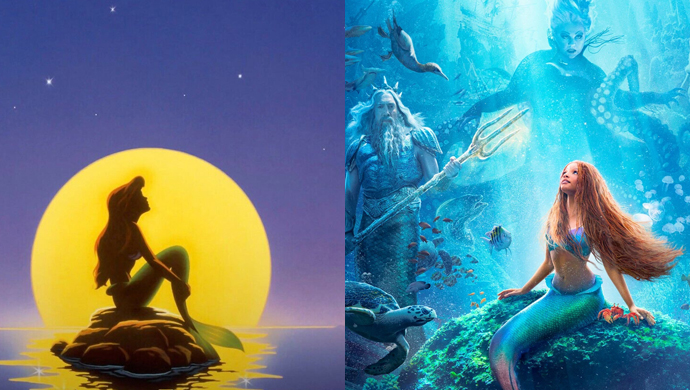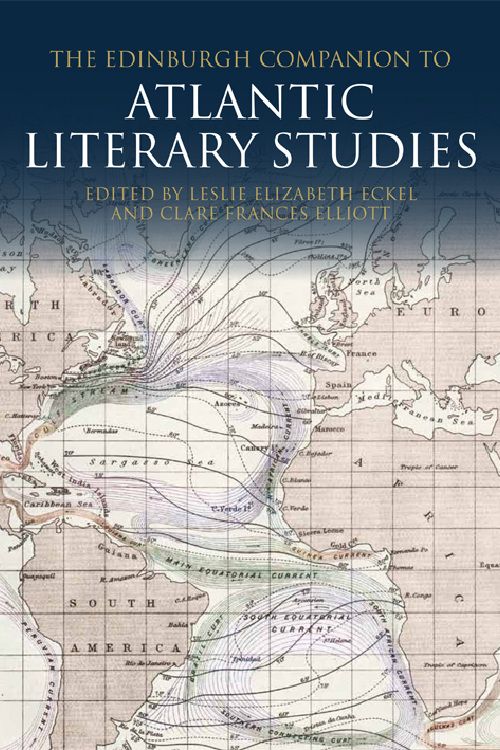Table of Contents
The Atlantic Ocean, with its vast expanse of open water, rugged coastlines and ever-changing moods, has long served as a wellspring of inspiration for artists and writers. From the turbulent waves of Herman Melville’s “Moby-Dick” to the serene seascapes of Winslow Homer’s paintings, the Atlantic has found its place in the realms of literature and art. In this article, we explore the enduring influence of the Atlantic on creative minds, celebrating the ocean’s role as a muse for human expression.
The Atlantic Ocean, with its boundless horizon, dramatic shores and unpredictable temperament, has eternally beckoned to creative souls, inviting them to draw inspiration from its timeless beauty and mystique. Throughout the annals of human history, this vast body of water has left an indelible mark on the canvas of literature and the world of art. From the tempestuous narrative of Herman Melville’s “Moby-Dick” to the tranquil seascapes that Winslow Homer painted with such finesse, the Atlantic Ocean has not merely been a geographical feature, but a profound source of artistic and literary fascination. In this exploration, we delve deeper into the enduring relationship between the Atlantic and the creative minds it has kindled, a relationship that continues to flourish, honoring the ocean’s enduring role as muse and catalyst for human expression.
Herman Melville’s “Moby-Dick” stands as a monumental testament to the Atlantic’s influence on literary genius. The novel’s ceaseless pursuit of the enigmatic white whale, set against the backdrop of the vast ocean, mirrors the human condition’s unending quest for meaning in the face of immense and incomprehensible forces. Melville’s portrayal of Captain Ahab’s relentless pursuit is a metaphor for humanity’s tireless pursuit of knowledge and understanding, even when faced with the vast unknown. The Atlantic Ocean, with its vastness and unfathomable depths, becomes not just a setting but a character in its own right, embodying the mystique and awe that it has instilled in generations.
In contrast, the serene and evocative seascapes painted by Winslow Homer capture the Atlantic’s more tranquil moments. Homer’s mastery of light and color allows him to convey the ever-shifting moods of the ocean, from the soft, pastel hues of a calm sea at dawn to the raw, untamed energy of crashing waves during a storm. His works evoke a deep sense of connection to the natural world and an appreciation for the Atlantic’s untamed beauty.
But the Atlantic’s influence on art and literature extends beyond these iconic examples. Countless poets, novelists and painters have drawn from the ocean’s depths of inspiration. It has provided a canvas upon which the human condition is painted in all its complexity, from the exploration of new worlds to the metaphorical journeys of self-discovery.
As we continue to grapple with environmental challenges and an ever-changing world, the Atlantic Ocean remains a source of reflection, inspiration and contemplation for artists and writers alike. Its vastness reminds us of the boundless potential of the human imagination and its unpredictability reflects the inherent uncertainties of life. In celebrating the Atlantic’s enduring role as muse, we pay tribute to the enduring connection between humanity and the natural world, a connection that continues to inspire creativity, wonder and introspection.
Should you desire more in-depth information, it’s available for your perusal on this page: AP Art History Course and Exam Description PDF
Literary Voyages: Novels of the Atlantic
The Atlantic Ocean has been a central character in numerous literary works, setting the stage for tales of adventure, exploration and contemplation. Herman Melville’s “Moby-Dick” takes readers on a harrowing voyage in pursuit of the elusive white whale, using the ocean as a metaphor for the human condition and the pursuit of knowledge. The Atlantic’s vastness and unpredictability have also served as a backdrop for countless tales of shipwrecks, survival and self-discovery.
The Atlantic Ocean, spanning an immense expanse between the Old World and the New, has not only been a geographical marvel but also an enduring muse for countless writers, inviting them to delve into its depths both literal and metaphorical. As a central character in numerous literary works, this great body of water has taken on multifaceted roles, often reflecting the dreams, fears and aspirations of humanity.
Herman Melville’s magnum opus, “Moby-Dick,” masterfully illustrates the Atlantic’s multifaceted nature. In the novel, the ocean becomes a symbol of the human condition itself. Captain Ahab’s relentless pursuit of the elusive white whale mirrors our relentless pursuit of knowledge and meaning in an ever-expanding world. The Atlantic, with its vastness and unpredictability, serves as a powerful metaphor for the relentless and often perilous journey of self-discovery that each of us embarks upon.
Beyond “Moby-Dick,” the Atlantic Ocean has been a canvas upon which countless authors have painted their stories of adventure and exploration. From Jules Verne’s “20,000 Leagues Under the Sea,” where readers are taken on a fantastical journey beneath its waves, to Arthur Gordon Pym’s harrowing voyage in Edgar Allan Poe’s “The Narrative of Arthur Gordon Pym of Nantucket,” the Atlantic has been a backdrop for tales of daring escapades and the thirst for discovery.
The Atlantic’s significance in literature goes beyond adventure; it also serves as a powerful symbol of resilience and survival. Stories of shipwrecks and castaways, like Daniel Defoe’s “Robinson Crusoe” and Yann Martel’s “Life of Pi,” capture the human spirit’s indomitable will to survive against all odds. The Atlantic’s tempestuous nature, with its ferocious storms and relentless waves, becomes a crucible for testing the limits of human endurance and adaptability.
Moreover, the Atlantic Ocean has played a pivotal role in narratives of migration, transformation and cultural exchange. It has been a bridge and a barrier, a source of hope and despair, for generations of individuals seeking a better life or escaping from oppressive circumstances. The stories of immigrants, such as those depicted in Isabel Allende’s “Daughter of Fortune” or Colm Tóibín’s “Brooklyn,” demonstrate how the Atlantic has shaped identities and connected distant shores in the tapestry of human history.
In essence, the Atlantic Ocean remains an enduring symbol in literature, representing the profound complexities of the human experience. Whether it serves as a metaphor for our ceaseless quest for understanding, a backdrop for adventures of the high seas, a crucible of survival or a bridge between cultures, the Atlantic’s vastness and enigma continue to captivate the imagination of writers and readers alike, inviting us to explore the depths of both the world and ourselves.
For a comprehensive look at this subject, we invite you to read more on this dedicated page: Edgar Allan Poe Pioneers Science Fiction (U.S. National Park Service)

Maritime Poetry: Verses of the Sea
Poets have been drawn to the Atlantic’s shores for centuries, finding inspiration in its beauty, power and symbolism. Walt Whitman’s “Sea-Drift” poems capture the ocean’s rhythmic ebb and flow, reflecting the cycles of life and death. The Atlantic’s waves have also inspired verses that explore themes of love, longing and the eternal pull of the sea.
Indeed, poets have been irresistibly drawn to the majestic shores of the Atlantic for centuries, their hearts and souls entwined with the ever-changing moods of this vast expanse of water. The Atlantic Ocean, with its boundless beauty, awe-inspiring power and profound symbolism, serves as an eternal muse for poetic minds.
1. Walt Whitman’s “Sea-Drift” Poems: In the eloquent verses of Walt Whitman’s “Sea-Drift” poems, the Atlantic’s rhythmic ebb and flow become a metaphor for the inexorable cycles of life and death. Whitman’s words evoke a sense of cosmic unity, where the ocean’s ceaseless motion mirrors the eternal passage of time. With every wave that crashes upon the shore, he captures the essence of existence, urging us to contemplate our place within this grand continuum.
2. Themes of Love and Longing: The Atlantic’s waves have a way of awakening profound emotions in poets. They often become the backdrop for verses that explore themes of love, longing and the ever-persistent pull of the sea. The vastness of the ocean serves as a poignant metaphor for the depths of human emotions, where love can be as boundless as the horizon and longing as endless as the tides.
3. Symbolism of the Eternal Sea: Beyond its physical attributes, the Atlantic embodies a rich tapestry of symbolism in poetry. It represents the eternal and the uncharted, inviting poets to contemplate the mysteries of existence. The sea becomes a powerful allegory for the human condition, with its vastness mirroring the boundless depths of our souls.
In the verses inspired by the Atlantic, poets find solace, connection and a sense of wonder. They remind us that the ocean is not merely a geographical feature but a profound source of inspiration that transcends time and place. It is a testament to the enduring power of nature to stir the human spirit and ignite the creative flame within. As poets continue to be entranced by the Atlantic’s allure, their verses serve as timeless reflections of our shared fascination with the beauty and mysteries of the natural world.
If you’d like to dive deeper into this subject, there’s more to discover on this page: Drexciya: how Afrofuturism is inspiring calls for an ocean memorial …

Seascapes in Visual Arts
The Atlantic’s ever-changing seascapes have been a favorite subject for visual artists throughout history. Winslow Homer’s seascapes, such as “The Gulf Stream” and “Breezing Up,” capture the ocean’s dynamic beauty and the resilience of those who navigate it. The play of light on water, the drama of stormy seas and the serenity of calm shores have all found their place on canvas, providing a rich tapestry of visual interpretations.
The Atlantic’s ever-changing seascapes have been a favorite subject for visual artists throughout history. Winslow Homer’s seascapes, such as “The Gulf Stream” and “Breezing Up,” capture the ocean’s dynamic beauty and the resilience of those who navigate it. The play of light on water, the drama of stormy seas and the serenity of calm shores have all found their place on canvas, providing a rich tapestry of visual interpretations.
Winslow Homer, a master of marine art, adeptly portrayed the Atlantic’s vastness and unpredictability. “The Gulf Stream” is a testament to the formidable power of the ocean, showcasing a lone sailor adrift in a small fishing boat, surrounded by tumultuous waves and ominous skies. This painting speaks to the human spirit’s resilience in the face of nature’s forces, reminding us of the courage it takes to brave the open sea.
On the other hand, “Breezing Up” captures a moment of fleeting tranquility—a family joyously sailing in calm waters. The composition exudes a sense of hope and optimism, illustrating the harmony between humanity and the Atlantic when conditions are favorable. Homer’s ability to depict both the tempestuous and the tranquil aspects of the Atlantic highlights the diverse moods and characteristics of this magnificent body of water.
In addition to Homer’s works, countless artists over the years have been drawn to the Atlantic’s beauty. From the Impressionists’ fascination with capturing the shifting light and color of the ocean to contemporary artists exploring climate change’s impact on coastlines, the Atlantic continues to inspire a vast array of artistic expression. The ocean’s ceaseless ebb and flow, its vibrant marine life and its deep connection to our planet’s ecosystem provide an endless source of creative inspiration for artists across genres and time periods.
Through art, we can appreciate the Atlantic’s grandeur and significance beyond the physical. It allows us to connect with its many facets, fostering a deeper understanding of our relationship with this vast and powerful entity, while also serving as a timeless reminder of the importance of preserving and cherishing our oceans.
If you’d like to dive deeper into this subject, there’s more to discover on this page: 12 Caribbean Artists Who Are Shaping Contemporary Art | Artsy

Coastal Culture and Folklore
The Atlantic’s coastal communities have inspired a wealth of folklore, music and cultural expressions. From sea shanties sung by sailors to tales of mythical sea creatures, the ocean’s presence is woven into the fabric of coastal traditions. These cultural expressions celebrate the symbiotic relationship between humans and the sea, reflecting the reliance, reverence and sometimes fear associated with the Atlantic.
The coastal communities lining the vast expanse of the Atlantic Ocean have nurtured a rich tapestry of folklore, music and cultural expressions that are as diverse as the waves themselves. Rooted deeply in the rhythms of the sea and the ebb and flow of coastal life, these cultural treasures offer us a glimpse into the profound and complex relationship between humans and the ocean that sustains them.
One of the most enchanting forms of cultural expression born from the Atlantic’s embrace is the sea shanty. These spirited songs, sung by sailors as they toiled on ships, are a testament to the ocean’s enduring presence in the lives of those who make their livelihoods upon its surface. Sea shanties, with their powerful melodies and synchronized rhythms, served not only as a means of coordinating labor but also as a source of camaraderie and morale during long and arduous voyages. They are a musical embodiment of the ocean’s influence on human existence, capturing both the challenges and the sense of adventure that come with life at sea.
Alongside sea shanties, the Atlantic’s coastal communities have given rise to a treasure trove of maritime folklore. Tales of ghost ships, mermaids and legendary sea creatures have been passed down through generations, each story adding a layer to the mystique and wonder of the ocean. These stories reflect the deep reverence and sometimes the fear that humans have felt toward the Atlantic—a body of water that can be both generous and unforgiving. The folklore of the sea, told through generations, serves as a reminder of the profound connection between humanity and the natural world.
Additionally, the cultural expressions of coastal communities extend to visual arts, dance and culinary traditions that are steeped in maritime heritage. Paintings of tempestuous seas and tranquil coastal landscapes, traditional dances inspired by the movements of waves and fishing and dishes crafted from the bounty of the ocean all serve as vibrant reflections of the Atlantic’s influence on culture.
The Atlantic Ocean, with its rhythmic tides and ever-changing moods, continues to inspire and shape the identities of coastal communities. It is a wellspring of creativity and storytelling, a source of sustenance and livelihood and a reminder of the profound connections that bind humanity to the natural world. These cultural expressions not only celebrate the ocean’s significance but also convey the enduring spirit of those who call the coastlines of the Atlantic home.
You can also read more about this here: What is a mermaid? | Royal Museums Greenwich

Contemporary Reflections
In modern times, the Atlantic continues to captivate the creative imagination. Contemporary literature explores themes of climate change, environmentalism and the impact of human activities on the ocean. Artists engage with the Atlantic as a symbol of our connection to the natural world and the challenges we face in preserving it for future generations.
As we navigate the complexities of the modern world, the Atlantic Ocean remains a profound source of inspiration for the creative spirit. This vast expanse of water continues to captivate our collective imagination in myriad ways, shaping contemporary literature, art and our understanding of the environment. Here’s a deeper exploration of how the Atlantic inspires and challenges the creative mind:
A Canvas for Climate Change: Contemporary literature often delves into pressing global issues and climate change is a topic at the forefront of our concerns. The Atlantic, with its vastness and undeniable presence in our lives, serves as a compelling backdrop for narratives that explore the consequences of rising sea levels, changing weather patterns and the impact of climate change on coastal communities.
Environmentalism and Conservation: Literature and art play a crucial role in fostering environmental awareness. Modern works of fiction, non-fiction and visual art shed light on the importance of preserving the Atlantic’s fragile ecosystems. They emphasize the need for responsible stewardship of our natural resources and the urgent call to protect the ocean’s biodiversity.
Human Activities and Ocean Health: The Atlantic is not just a passive setting; it’s an active participant in our stories. Contemporary literature and art often depict the consequences of human activities, such as overfishing, pollution and habitat destruction, on the health of the ocean. These creative works serve as powerful reminders of our role in shaping the future of the Atlantic.
Symbolism of Connection: Artists, in particular, find profound symbolism in the Atlantic as a representation of our connection to the natural world. The vastness of the ocean serves as a mirror for our inner landscapes, reflecting our dreams, fears and aspirations. It challenges us to contemplate our place in the grand tapestry of nature.
Challenges and Resilience: The Atlantic Ocean is a symbol of resilience in the face of adversity. Modern literature and art often celebrate the ability of marine life to adapt to changing conditions. These works inspire hope and underscore the importance of our collective efforts to protect and rejuvenate the ocean.
Maritime Mysteries: The Atlantic’s depths continue to hold mysteries that capture our imagination. Contemporary literature and art explore the allure of uncharted territories, hidden treasures and the sense of adventure that the ocean instills in us.
A Call to Action: The Atlantic serves as a poignant reminder of the challenges we face in preserving our planet for future generations. Contemporary creators use their craft to issue a call to action, urging individuals, communities and nations to take responsibility for the well-being of the ocean and its invaluable contributions to our world.
In this age of creativity and awareness, the Atlantic Ocean stands as a symbol of both inspiration and responsibility. It invites contemporary writers, artists and thinkers to explore the intricate relationship between humanity and the natural world. Through their works, they challenge us to confront the urgent environmental issues of our time and to envision a future where the Atlantic’s timeless beauty and vitality endure for generations to come.
Looking for more insights? You’ll find them right here in our extended coverage: Atlantic Nessologies: Image, Territory, Value

The Atlantic Ocean’s enduring presence in literature and art speaks to its timeless significance in the human psyche. Whether portrayed as a source of adventure, a symbol of the sublime or a reflection of the human condition, the Atlantic continues to inspire and provoke thought. As we navigate the challenges of the 21st century, the ocean remains a powerful muse, reminding us of our profound connection to the open sea and the boundless possibilities it represents for creativity and contemplation.
The Atlantic Ocean’s timeless allure has left an indelible mark on the realms of literature and art, resonating with the deepest corners of the human psyche. Across generations, it has been a subject of fascination and inspiration, transcending its physical boundaries to become a symbol of our collective imagination. Here’s an exploration of how the Atlantic’s enduring presence in literature and art continues to captivate hearts and minds:
1. A Source of Adventure: From the daring voyages of explorers like Christopher Columbus and Ferdinand Magellan to the epic tales of Moby-Dick and Robinson Crusoe, the Atlantic Ocean has long served as a backdrop for adventures that have stirred the human spirit. Its vastness and unpredictability have provided the canvas for stories of discovery, courage and the triumph of the human will over the elements.
2. The Sublime and the Majestic: Romantic poets and painters of the 19th century, such as J.M.W. Turner and William Wordsworth, turned their gaze to the Atlantic’s grandeur. They found in its crashing waves, endless horizons and turbulent storms the embodiment of the sublime—a force both awe-inspiring and humbling. Their works sought to capture the ocean’s majestic power and its ability to evoke profound emotional responses.
3. Reflection of the Human Condition: The Atlantic Ocean has often been used as a metaphor for the human condition. It represents the vast unknown, the uncharted territories of life and the boundless possibilities that lie beyond the horizon. In literature and art, it has been employed as a mirror reflecting the complexities of existence, from the pursuit of dreams and aspirations to the challenges and tribulations we face.
4. Environmental Awareness: In contemporary times, the Atlantic Ocean has taken on new significance as a symbol of environmental consciousness. Artists and writers are increasingly drawn to the ocean as a subject that highlights the urgent need for conservation and stewardship. It serves as a reminder of the fragile balance of our natural world and the responsibility we bear to protect it.
5. Global Connectivity: The Atlantic Ocean has played a pivotal role in the interconnectedness of the world. It has served as a bridge between continents, facilitating trade, cultural exchange and the movement of people. In literature and art, it continues to be a symbol of global connectivity, reminding us of the shared human experience that transcends borders and oceans.
6. Muse for Creativity: For writers, artists and creators of all kinds, the Atlantic Ocean remains a powerful muse. Its ever-changing moods, breathtaking beauty and profound symbolism provide an endless source of inspiration. Whether through poetry, painting, music or literature, artists channel their creativity to capture the essence of the Atlantic and convey its significance to the world.
7. Gateway to Exploration: As we navigate the challenges and opportunities of the 21st century, the Atlantic Ocean remains a gateway to exploration and innovation. It continues to beckon scientists, researchers and adventurers to delve into its depths, uncover its mysteries and seek solutions to global issues such as climate change and biodiversity conservation.
In the intricate tapestry of human culture, the Atlantic Ocean is woven into the very fabric of our existence. It represents the eternal quest for discovery, the profound beauty of the natural world and the boundless human imagination. As we confront the complexities of the modern era, the ocean endures as a powerful reminder of our deep-seated connection to the open sea and the limitless opportunities it offers for creativity, reflection and exploration. The Atlantic’s timeless significance lives on, encouraging us to cherish, protect and celebrate the wonders of our world’s oceans.
If you’d like to dive deeper into this subject, there’s more to discover on this page: ‘Between the World and Me’ by Ta-Nehisi Coates – The Atlantic
More links
For a comprehensive look at this subject, we invite you to read more on this dedicated page: The Atlantic
